Flying Crane
Sr. Grandmaster
A little known secret: I was him in a past life. Now you know.Now there you go sounding like Wang Xiangzhai again
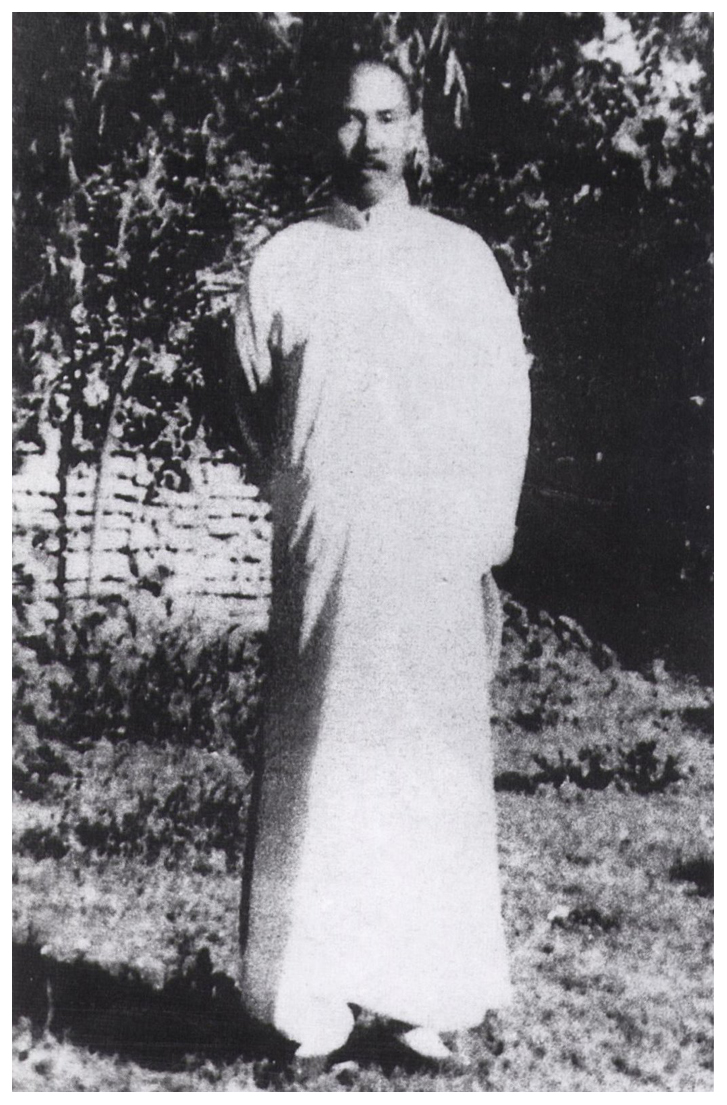
Follow along with the video below to see how to install our site as a web app on your home screen.
Note: This feature may not be available in some browsers.
A little known secret: I was him in a past life. Now you know.Now there you go sounding like Wang Xiangzhai again

This is why some Taiji people use "push" to replace the term "grappling". When you use both hands to push your opponent back, you don't need to train any "leg skill".But I know that sometimes a curriculum can become cumbersome, and there are reasonable and intelligent ways to restructure the material to make it less cumbersome.
Well I’m not advocating for the ejection of material that is useful. If it is worth keeping, a worthwhile skill, then by all means keep it. But sometimes curriculum clutter gets in the way of efficient training.This is why some Taiji people use "push" to replace the term "grappling". When you use both hands to push your opponent back, you don't need to train any "leg skill".
If we don't use any leg skill, the grappling art can be very simple.
I don't understand what you are talking about here. Could you provide more information on this?But sometimes curriculum clutter gets in the way of efficient training.
What you are describing here sounds like probably legitimate variations that would need to be practiced separately because they are rather distinct based on body positioning and choice of target and such.I don't understand what you are talking about here. Could you provide more information on this?
You can use your leg to attack the
- outside of your opponent's right leg (1st side).
- inside of your opponent's right leg (2nd side).
- inside of your opponent's left leg (3rd side).
- outside of your opponent's left leg (4th side).
If you just train one leg skill, when the opportunity arrives, you may not have the right leg skill to take advantage on it.
Ok, here is an example:I don't understand what you are talking about here. Could you provide more information on this?
You can use your leg to attack the
- outside of your opponent's right leg (1st side).
- inside of your opponent's right leg (2nd side).
- inside of your opponent's left leg (3rd side).
- outside of your opponent's left leg (4th side).
If you just train one leg skill, when the other opportunity arrives, you may not have the right leg skill to take advantage on it.
Here is the concern. When you use 1st side leg skill "cut" to take your opponent down, you may push on your opponent'sThey often responded to a similar attack with a similar defense resulting in a similar joint lock. But there would be a minor difference somewhere in the process. To me, those are the same technique with what ought to be viewed as an on-the- fly adjustment, and don’t merit status as a separate technique.
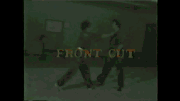
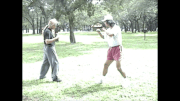
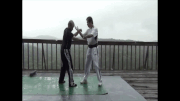
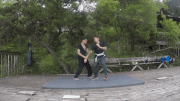
I agree in your example, the complexity may not be necessary.A follow-up finishing move can be included, but adding five or so separate options is pointless and cumbersome.
I would say they are one technique. It’s ok to address the variations so people are aware of the possibilities. But I wouldnt codify it.Here is the concern. When you use 1st side leg skill "cut" to take your opponent down, you may push on your opponent's
- shoulder (1st clip).
- throat (2nd clip),
- head lock (3rd clip),
- shoulder lock (4th clip),
- chin,
- forehead,
- ...
Do you consider these as 1 technique, or 4 different techniques?
1. Shoulder push cut:

2. Throat push cut:

3. Head lock cut:

4. Shoulder lock cut:

I agree that when using "cut", whether to push on the throat, shoulder, chin, forehead won't make that much difference. Since head lock is to move your opponent's head side way, it should be treated differently. The shoulder lock should be treated differently too.I would say they are one technique. It’s ok to address the variations so people are aware of the possibilities. But I wouldnt codify it.
However, the shoulder lock may be distinct enough to merit its own attention, even separate from this example.
Maybe they get their own treatment separate from the cuts, and at a later stage they are taught as to how you can get creative and combine them with the cut depending on circumstances. I feel like people ought to make their fundamentals solid, and then they can mix it up as they need.I agree that when using "cut", whether to push on the throat, shoulder, chin, forehead won't make that much difference. Since head lock is to move your opponent's head side way, it should be treated differently. The shoulder lock should be treated differently too.
Agree with you 100% there. The foundation is so important. I like to use the cane bundle to develop my "cut" foundation.I feel like people ought to make their fundamentals solid, and then they can mix it up as they need.
I don't think it's a tree, I think it's a web (or a multidimensional matrix). At some point, A is going to be one of the branches to A13423.Here is a training method that I like. Would like to hear your opinion on this?
You use technique A to attack your opponent. If your opponent responds with method
- 1, you change your technique A into A1.
- 2, you change your technique A into A2.
- ...
- n, you change your technique A into An.
Starting with technique A as the main trunk of a tree, depending on your opponent's different responds, your tree starts to branch out as A1, A2, ..., An.
Next step will be the sub-branches that branch out from A1 (A11, A12, ... A1n), A2 (A21, A22, ... A2n) , ..., An (An1, An2, ..., Ann). After many levels, you will then have a full growing tree.
View attachment 28295
The trees still quiver in fear...I trained Police Sanda for a bit, and the tree training method was we hit trees
Which one is better? Your opponent punches at you. YouSo which one is best? I think it lies with the student.
To figure out your opinion? Depends on how long you wait to tell them.How long will it take for a beginner to figure this out?
Thank you, Chris....for one of your shortest postsTo my mind, this is not martial arts... it's martial list-making... and misses entirely the way martial arts work. It's an amateur approach, based on thinking every problem has it's own single answer, when the reality is that martial arts are geared up to give one answer (principle) that can be applied to as many problems (situations, attacks) as possible. To go this way (the "tree" concept) is to never develop any understanding or skill in the art itself, even if technical skill is achieved in individual techniques... it's a beginner mentality and understanding.
